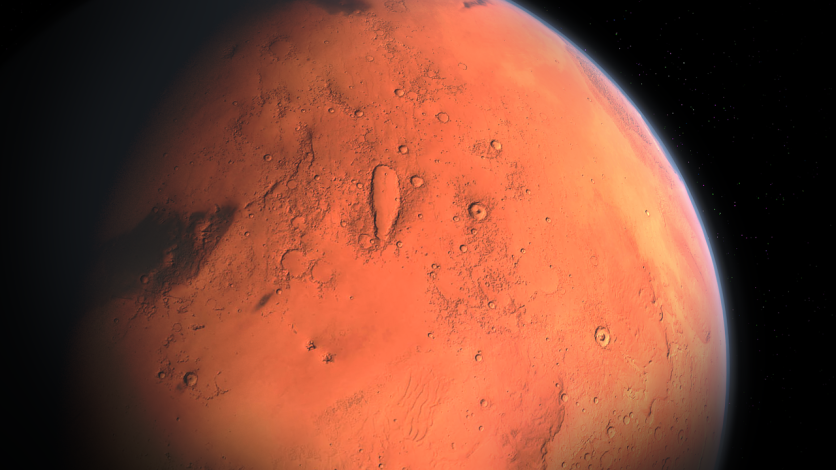NASA's Curiosity Mars Rover has made a startling discovery: it revealed the presence of methane seeping from the surface of Gale Crater on the Red Planet, leaving scientists intrigued.

What the Seeping Methane Could Mean for Mars
NASA explains that on Earth, methane emissions are primarily attributed to living organisms, prompting surprise among researchers as Mars hasn't shown conclusive evidence of current or past life.
Nonetheless, the Sample Analysis at Mars (SAM) instrument aboard Curiosity has consistently detected traces of methane near the surface of Gale Crater, the sole location on Mars where methane has been observed thus far. Scientists believe the source of this methane is likely geological processes involving water and rocks deep beneath the Martian surface.
However, the behavior of methane in Gale Crater has posed unexpected challenges. According to NASA's report, the gas appears predominantly at night and dissipates during the day, showing seasonal fluctuations and occasional spikes, sometimes reaching levels 40 times higher than average.
Strangely, methane levels do not accumulate in the Martian atmosphere, as confirmed by the European Space Agency's ExoMars Trace Gas Orbiter.
Ashwin Vasavada, Curiosity's project scientist at NASA's Jet Propulsion Laboratory, describes the discovery as a narrative filled with intriguing plot twists, reflecting the complexities of Mars' methane dynamics.
Read Also : NASA Curiosity Rover: Watch a Martian Day's Timelapse and See What It's Like on the Next-Door Planet
Methane in Gale Crater
Research efforts have been intensified to understand the peculiar behavior of methane in Gale Crater. A recent study proposed a novel hypothesis, suggesting that methane may be trapped beneath solidified salt formations within the Martian regolith or soil.
According to a study by Alexander Pavlov, a planetary scientist at NASA's Goddard Space Flight Center, methane can be released when salt seals are weakened by temperature fluctuations or mechanical stress, such as from rover movements.
The hypothesis stems from an experiment in 2017 by Pavlov and his team, where microorganisms were cultivated in simulated Martian permafrost infused with salt. Although inconclusive, the experiment revealed the formation of a salt crust when icy soil sublimated, leaving behind salt residues.
Drawing from this insight, Pavlov's team conducted further experiments, exposing permafrost samples to varying concentrations of perchlorate, a salt abundant on Mars.
According to NASA, seals formed within days under simulated Martian conditions, demonstrating the plausibility of methane entrapment beneath salt formations.
While the perchlorate concentrations tested were higher than those observed in Gale Crater, the team plans to investigate sulfate-rich salts prevalent in the crater to validate their findings.
Enhancing the understanding of methane dynamics on Mars is a priority outlined in NASA's 2022 Planetary Mission Senior Review. However, consistent methane measurements remain elusive, as SAM conducts sporadic methane surveys due to resource constraints.
Charles Malespin, principal investigator for SAM at NASA Goddard, emphasizes the need for future surface missions equipped with instruments capable of continuous methane monitoring across multiple Martian locations to address lingering questions about methane fluctuations.
Related Article : NASA Tests Future Mars Helicopter Designs on Earth and Red Planet, Getting the 'Best of Both Worlds'

ⓒ 2025 TECHTIMES.com All rights reserved. Do not reproduce without permission.




